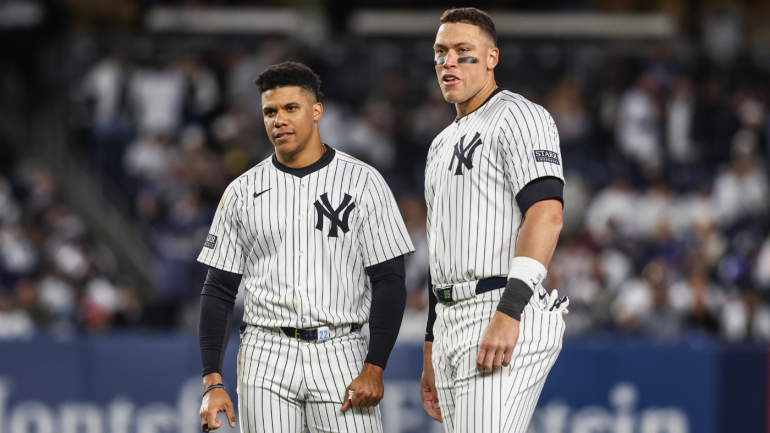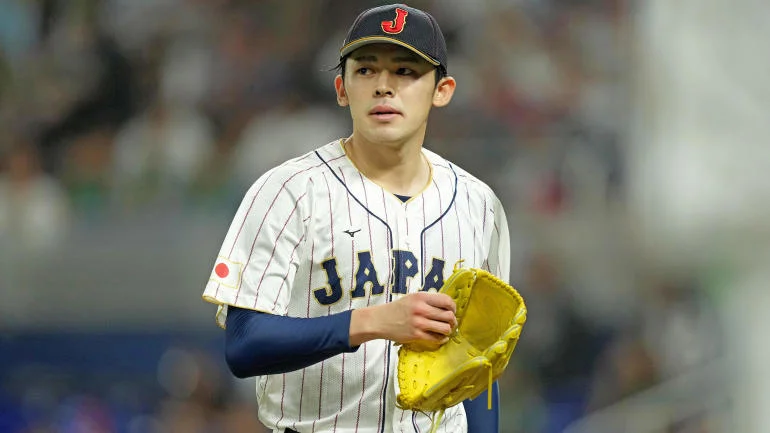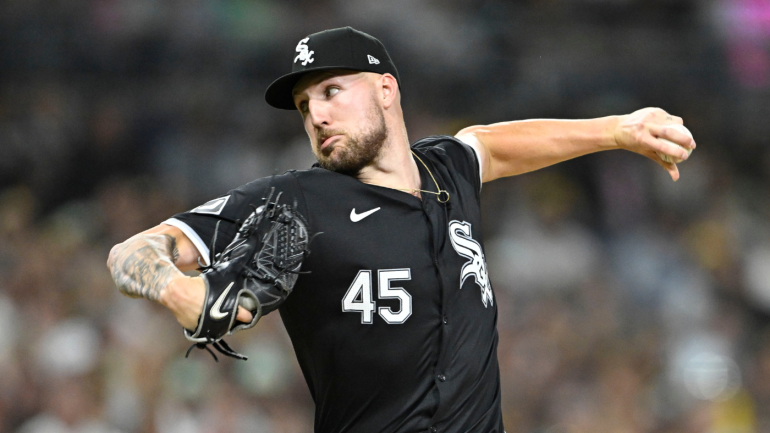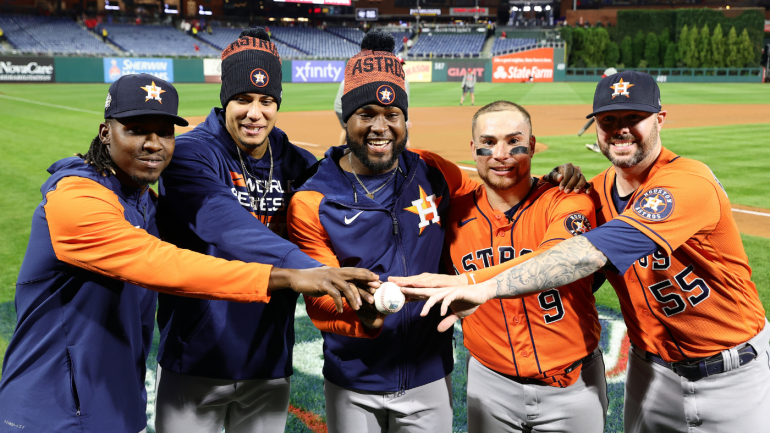How big an impact does playoff pitching have?
Throughout the MLB offseason, fantasy baseball analysts and managers try to identify sleepers and busts, players who will provide excess value and players who are likely to be overpriced on draft day. Dozens of different aspects are studied, as statistics from the previous season are carefully combed and considered. Earlier in the 2017 season, I heard a few voices looking towards the Cubs starting pitching struggles and blaming heavy use in the playoffs. This had me intrigued, so I looked to the statistics to see if there was any real backing for this argument, and whether or not the pitchers that put in many innings in the 2017 Postseason ought to be avoided and denoted as possible busts in 2018.
From an anecdotal perspective, Jon Lester seems to be the poster child for the pro-argument for decreasing a pitcher’s draft stock when they put in a lot of extra work in the Postseason. After pitching 35.2 innings in the 2016 postseason, 238.1 IP total in 2016, he had the worst season of his career. His ERA was up nearly two full runs, his WHIP and FIP increased and his K/BB ratio decreased. As you can see in the tables below, Lester’s teammates Jake Arrieta and Kyle Hendricks also saw increases in their respective ERA, WHIP, and FIP stat lines from 2016 to 2017. Noteworthy exceptions are the performances from Corey Kluber and Andrew Miller, who both improved upon their 2016 regular season numbers, even after pitching 34.1 and 19.1 innings respectively in the 2016 Postseason.
The tables below look at the top ten pitchers in Postseason innings pitched in 2016, 2015, and 2014. Looking at the average difference from the 2016 regular season to the 2017 regular season, there does seem to be a noticeable effect on performance the following season. An average increase of three-quarters of a run in ERA, almost half a run in FIP, and a 0.149 increase in WHIP is nothing to scoff at. Interestingly enough, the average K/BB ratio actually increased, though the deviation of K/BB Dif. is massive.
| 2016 | Post. IP | Reg. IP | Total IP | ERA Dif. | WHIP Dif. | FIP Dif. | K/BB Dif. |
| Jon Lester | 35.2 | 202.2 | 238.1 | 1.89 | 0.3 | 0.68 | -0.79 |
| Corey Kluber | 34.1 | 215.0 | 239.1 | -0.89 | -0.19 | -0.47 | 3.38 |
| Kyle Hendricks | 25.1 | 190.0 | 215.1 | 0.9 | 0.21 | 0.68 | -0.78 |
| Clayton Kershaw | 24.1 | 152 | 176.1 | 0.62 | 0.23 | 1.27 | -8.91 |
| Jake Arrieta | 22.1 | 197.1 | 219.1 | 0.43 | 0.14 | 0.63 | 0.46 |
| Marco Estrada | 22.1 | 176 | 198.1 | 1.5 | 0.26 | 0.46 | -0.06 |
| Andrew Miller | 19.1 | 74.1 | 93.2 | -0.01 | 0.14 | 0.31 | 9.15 |
| Josh Tomlin | 17.2 | 174 | 191.2 | 0.58 | 0.09 | -0.76 | 1.89 |
| Aroldis Chapman | 15.2 | 58 | 73.2 | 1.67 | 0.27 | 1.14 | -1.55 |
| Mike Montgomery | 14.1 | 100 | 114.1 | 0.86 | 0.04 | 0.28 | -0.6 |
| Average | 0.755 | 0.149 | 0.422 | 0.219 | |||
| 2015 | Post. IP | Reg. IP | Total IP | ERA Dif. | WHIP Dif. | FIP Dif. | K/BB Dif. |
| Edinson Volquez | 28.2 | 200.1 | 229 | 1.82 | 0.24 | 0.75 | -0.32 |
| Matt Harvey | 26.2 | 189.1 | 216 | 2.15 | 0.45 | 0.42 | -2.04 |
| Johnny Cueto | 25 | 212 | 237 | -0.65 | -0.04 | -0.57 | 0.57 |
| Jacob deGrom | 25 | 191 | 216 | 0.5 | 0.22 | 0.52 | -1.42 |
| David Price | 23.1 | 220.1 | 243.2 | 1.54 | 0.18 | 0.82 | -0.23 |
| Yordana Ventura | 21 | 172.1 | 193.1 | 0.37 | 0.01 | 1.02 | -0.84 |
| Jake Arrieta | 19.2 | 229.0 | 248.2 | 1.33 | 0.22 | 1.17 | -2.42 |
| Marco Estrada | 19.1 | 181 | 200.1 | 0.35 | 0.07 | -0.25 | 0.16 |
| Marcus Stroman | 19.1 | 30 | 49.1 | – | – | – | – |
| Noah Syndergaard | 19 | 179.2 | 198.2 | -0.64 | 0.1 | -0.96 | -0.28 |
| Average | 0.752222 | 0.1611111 | 0.32444 | -0.75778 | |||
| 2014 | Post. IP | Reg. IP | Total IP | ERA Dif. | WHIP Dif. | FIP Dif. | K/BB Dif. |
| Madison Bumgarner | 52.2 | 217.1 | 270 | -0.05 | -0.08 | -0.18 | 0.91 |
| Yordano Ventura | 25.1 | 183 | 208.1 | 0.88 | 0 | -0.03 | 0.39 |
| James Shields | 25 | 227 | 252 | 0.7 | 0.15 | 0.86 | -1.42 |
| Tim Hudson | 21 | 189.1 | 210.1 | 0.87 | 0.15 | 0.99 | -1.8 |
| Jake Peavy | 16 | 202.2 | 218.2 | -0.15 | -0.16 | -0.09 | 0.61 |
| Adam Wainwright | 16 | 227 | 243 | Achilles | – | – | – |
| Jason Vargas | 15.1 | 187 | 202.1 | Tom John | – | – | – |
| Kelvin Herrera | 15 | 70 | 85 | 1.3 | -0.02 | 0.75 | 0.19 |
| Wade Davis | 14.1 | 72 | 86.1 | -0.06 | -0.06 | 1.1 | -0.84 |
| Jeremy Guthrie | 13.1 | 202.2 | 216 | 1.82 | 0.25 | 1.3 | -0.62 |
| Average | 0.66375 | 0.02875 | 0.5875 | -0.3225 |
The top innings eaters from the 2015 Postseason offer very similar results when looking at their average performance in the following season. Edinson Volquez, the leader in Postseason IP with 28.2, saw a drop in his performance that is very similar to that of Jon Lester this past season. With an ERA increase of nearly two runs, three-quarters of a run increase in FIP, a 0.24 increase in WHIP, and a 0.32 decrease in K/BB Volquez went from the Royals’ ace to a pitcher that put up a 5.37 ERA in one year.
Looking at the 2015 averages, we see very similar results to those from the 2016 Postseason. In the following season these pitchers saw their ERA increase of three-quarters of a run, WHIP up by 0.16, FIP up by 0.32, and a decrease in K/BB ratio of .758 on average. In this dataset, Marcus Stroman’s numbers were not included as he only pitched 30 innings in the regular season due to injury. Johnny Cueto and Noah Syndergaard represent the outliers for their fantastic 2016 seasons.
The 2014 numbers do not break the average trend – ERA up 0.664, WHIP up 0.029, FIP up 0.588, and K/BB down 0.323. However, the top workhorse in 2014 does represent the biggest outlier in the whole of the dataset. Madison Bumgarner’s 2014 Postseason was remarkable, pitching 52.2 innings and carrying the Giants to the 2014 World Series title. Similarly impressive in light of these numbers, Bumgarner had a great 2015 season, improving on his statistics from 2014 despite his historic workload in the playoffs.
The overall result of three years of data shows that there may be something to the narrative of pitchers struggling in the season following a heavy Postseason workload. The overall average of the whole dataset shows that the top ten pitchers in IP will see an increase of 0.724 in ERA, a 0.113 increase in WHIP, 0.445 increase in FIP, and a 0.287 decrease in K/BB ratio.
Let’s turn attention to the 2017 playoffs and the upcoming 2018 season.
Many of the pitchers with the heaviest Postseason workload this year, did not break 200 IP combined between the regular season and the playoffs. Seven of the top ten pitchers missed a significant amount of time to injury in 2017. Among these ten pitchers the two that I am most concerned about taking a step back in 2018 are Luis Severino and Justin Verlander. I am concerned that Severino was allowed to throw 209.1 innings in 2017 when his previous career high was 148.1 last season. That drastic increase in workload, along with Severino’s explosive velocity makes me think that he is as likely as any pitcher to injure his arm next season. His 2017 breakout was tremendous, however, I will not be drafting Severino come March.
Verlander is used to throwing 200+ innings, having done so 11 times in his career. However, I believe that at 35 years old, Justin Verlander is likely to begin showing very real signs of decline. One could argue that he already has, posting a 4.73 ERA in the first half of the 2017 season. Pair that with a 10/9% walk rate in the first half and Verlander looks like a bust through June. Of course, in the second half, he put up fantastic numbers, including a 1.95 ERA and a 5.5% walk rate. While I acknowledge that his 2nd half performance along with his showing in the playoffs were impressive, I am inclined to believe that the Justin Verlander we will see in 2018 will be more similar to the one we saw in the first half of this season.




